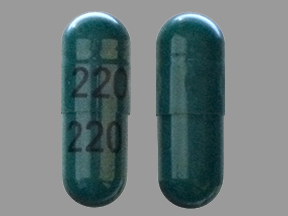
Cephalexin Coupons & Savings Card – Discount Prices from $5.14
Generic for: Keflex
My prescription
Edit
250MG, Cephalexin (28 Capsules)
Select pharmacy

CVS
$19.15
COUPON PRICE
Walmart
$5.14
COUPON PRICE
Walgreens
$8.09
COUPON PRICE
Albertsons
$11.27
COUPON PRICEFree Cephalexin Savings Card

Walmart
$5.14
Show this coupon to your pharmacist
ID
LH18CCDC7C
PCN
CHIPPO
BIN
019876
GRP
LHX
This coupon is not insurance
Related cephalosporin antibiotics prescriptions
More prescriptions for urinary tract infection
Related cephalosporin antibiotics prescriptions
More prescriptions for urinary tract infection
Price history for Keflex (brand) & Cephalexin (generic)
28 Capsules, 250MG
Average retail price for Keflex
Average retail price for Cephalexin
Average SaveHealth price for Cephalexin
Our price history data is based on aggregated prescription data collected from participating pharmacies in America. Our prescription data updates daily to reflect the latest price changes. If you notice a missing data point, it means there wasn't sufficient data available to generate a monetary value for that date.
We analyzed Cephalexin prices for (250MG, 28 Capsules) over the last 12 months. The average retail price was $22.12, while the average price using the SaveHealth discount card was $12.58. That's a savings of approximately 43.13% when using our Cephalexin coupon.
Compared to the generic version, Keflex had an average price of $311.16 over the same time period. With the SaveHealth savings card, Cephalexin is 95.96% cheaper on average than Keflex.
*Retail prices are based on pharmacy claims data, and may not be accurate when we don't have enough claims.
Cephalexin dosage forms
Dosage Quantity Price from Per unit 250MG 28 Capsules $5.14 $0.18 250MG 21 Capsules $4.48 $0.21 250MG 30 Capsules $5.33 $0.18 250MG 40 Capsules $6.28 $0.16 250MG 90 Capsules $17.50 $0.19 500MG 14 Capsules $4.71 $0.34 500MG 21 Capsules $5.81 $0.28 500MG 28 Capsules $6.91 $0.25 500MG 30 Capsules $7.23 $0.24 500MG 40 Capsules $8.80 $0.22
| Dosage | Quantity | Price from | Per unit |
|---|---|---|---|
| 250MG | 28 Capsules | $5.14 | $0.18 |
| 250MG | 21 Capsules | $4.48 | $0.21 |
| 250MG | 30 Capsules | $5.33 | $0.18 |
| 250MG | 40 Capsules | $6.28 | $0.16 |
| 250MG | 90 Capsules | $17.50 | $0.19 |
| 500MG | 14 Capsules | $4.71 | $0.34 |
| 500MG | 21 Capsules | $5.81 | $0.28 |
| 500MG | 28 Capsules | $6.91 | $0.25 |
| 500MG | 30 Capsules | $7.23 | $0.24 |
| 500MG | 40 Capsules | $8.80 | $0.22 |
| 750MG | 10 Capsules | $43.25 | $4.33 |
| 750MG | 14 Capsules | $53.35 | $3.81 |
| 750MG | 20 Capsules | $68.50 | $3.42 |
| 750MG | 21 Capsules | $71.03 | $3.38 |
| 750MG | 30 Capsules | $93.75 | $3.13 |
Cephalexin Warnings
Here are important safety considerations and warnings related to the use of this medication. Please read them carefully and consult your healthcare professional if you have any questions or concerns.
Allergic Reactions: There is a possibility of allergic reactions to cephalexin, which can range from mild symptoms like rashes and hives to severe reactions such as facial swelling and anaphylaxis (throat closure). If you have a known allergy to antibiotics, particularly penicillin or other cephalosporins, inform your healthcare provider. Seek immediate medical attention if you experience a rash, hives, red skin, swelling of the lips or tongue, or difficulty breathing after taking cephalexin.
C. difficile Infection Risk: The use of antibiotics, including cephalexin, increases the risk of Clostridioides difficile (C. diff) infection. This bacterium can proliferate in your gut when normal bacterial balance is disrupted, leading to potentially life-threatening diarrhea.
Drug-Resistant Bacteria: It is crucial to take cephalexin exactly as prescribed. Misuse or inappropriate duration of use can contribute to the development of drug-resistant bacteria, increasing the risk of severe and difficult-to-treat infections.
Seizure Risk: Cephalexin may elevate the risk of seizures, particularly at high doses or in individuals with kidney issues where dosage adjustments are not made. Discuss any history of seizures or kidney problems with your healthcare provider to ensure the medication is safe for you.
Bleeding Risk: There is an increased risk of bleeding, especially in individuals with kidney or liver problems, poor nutrition, or those on anticoagulants (blood thinners). Monitor for signs of excessive bleeding, such as unexplained bruising or blood in urine or stool, and discuss your risk factors with your healthcare provider. If on blood-thinning medication, follow up with your specialist for monitoring and possible dose adjustments.
Contraindications: Cephalexin should not be used if you have a severe allergy to cephalosporin or beta-lactam antibiotics. Consult your healthcare provider if this applies to you before starting the medication.
Cephalexin Side Effects
Common side effects:
- Diarrhea
- Nausea
- Vomiting
- Indigestion
- Stomach pain
Less common but important to monitor:
- Dizziness
- Fatigue
- Headache
- Confusion
- Joint pain
- Yeast infections
Serious side effects:
- Severe allergic reactions
- Severe intestinal condition (C. difficile infection)
Cephalexin Interactions
Interactions with high risk of serious adverse effects and should be avoided:
